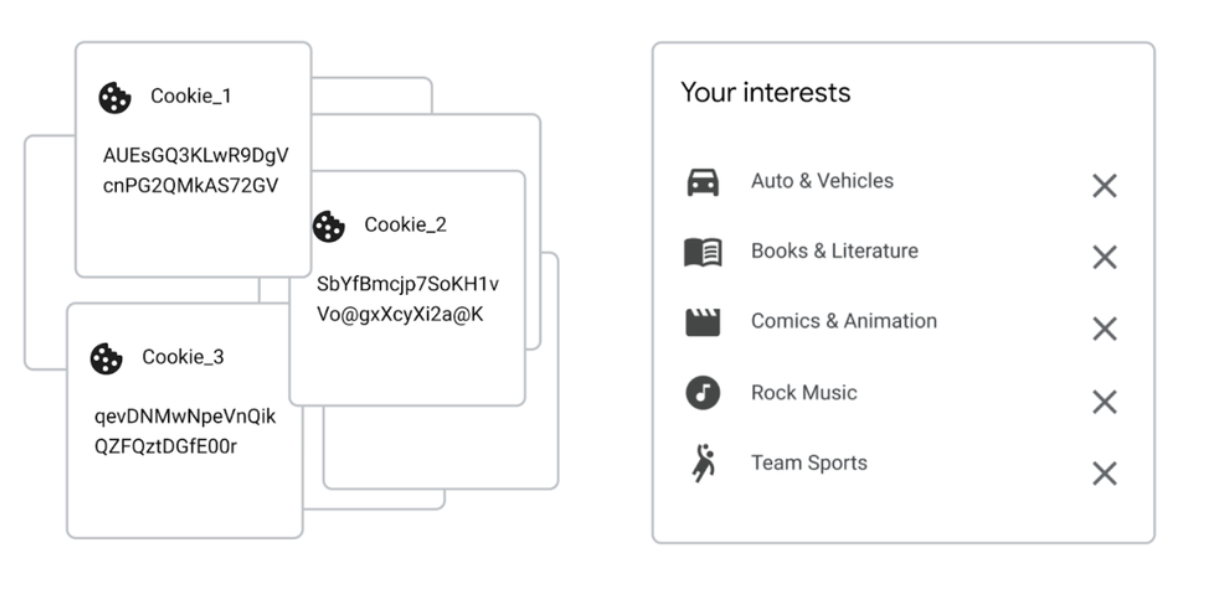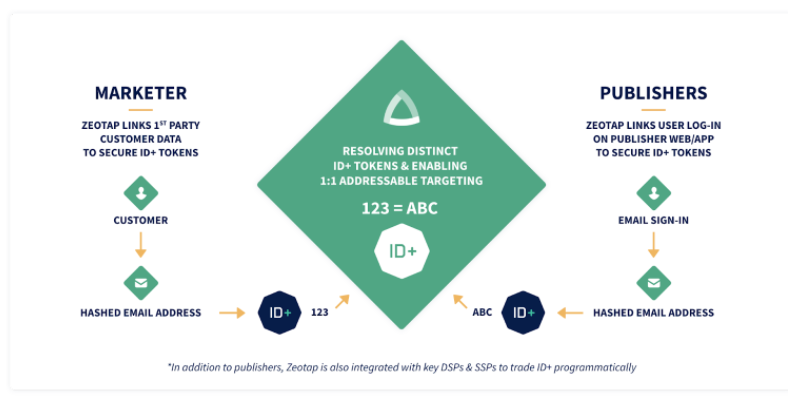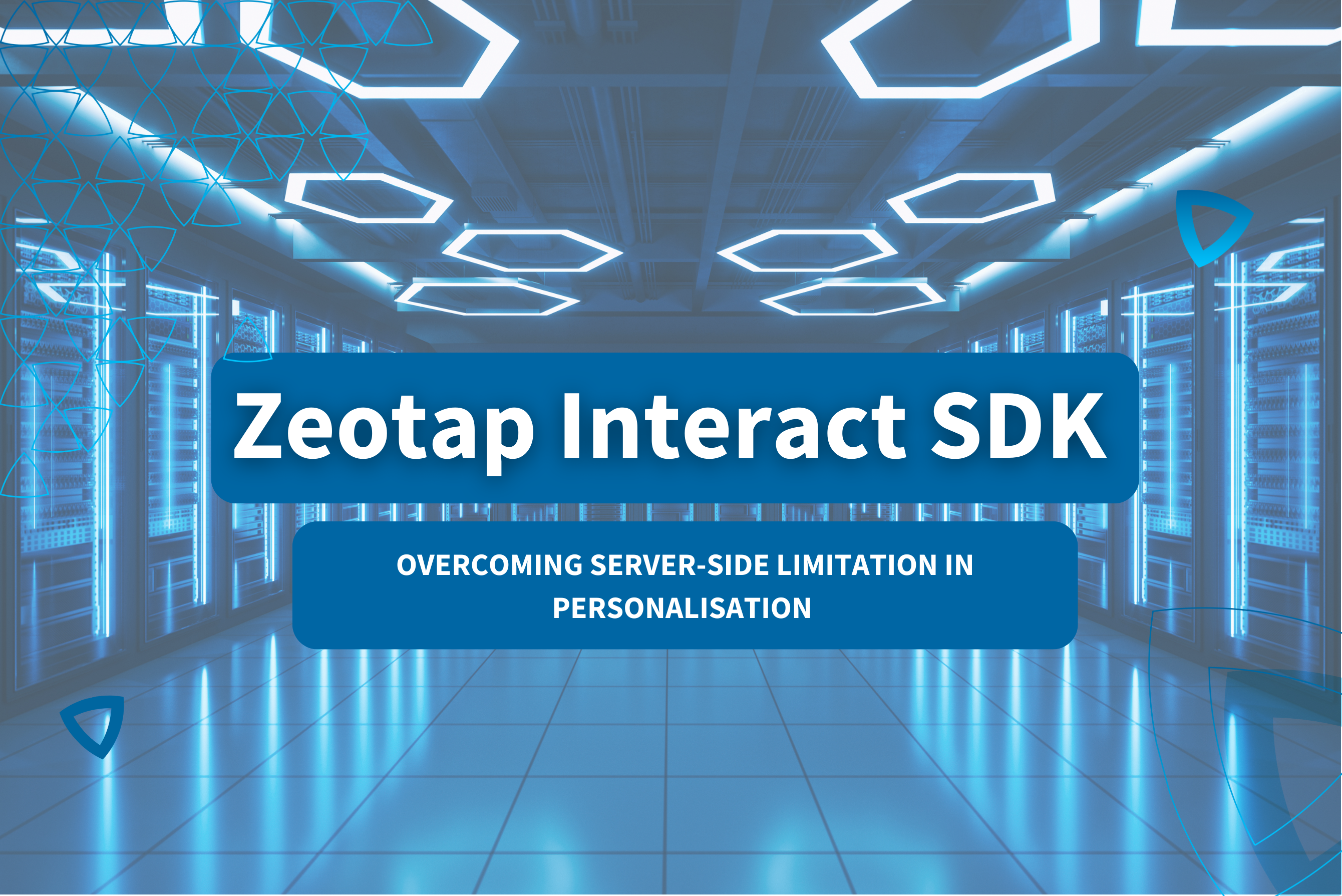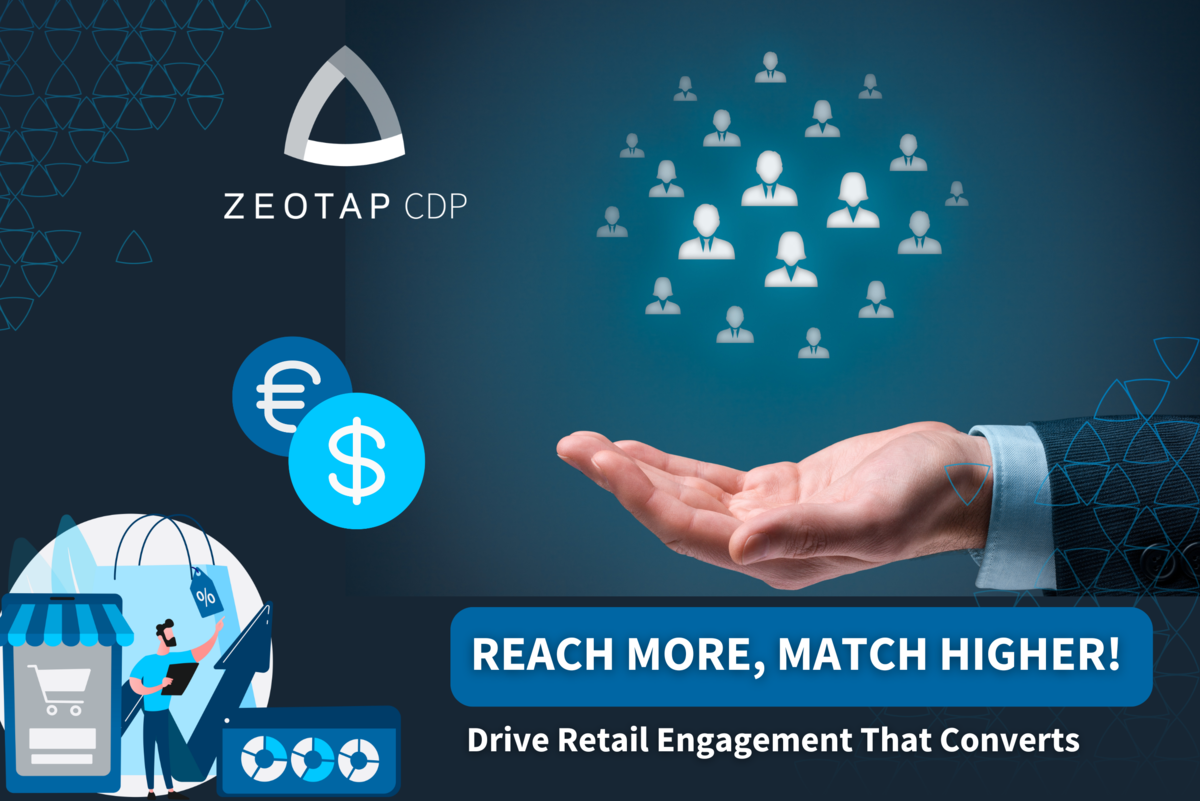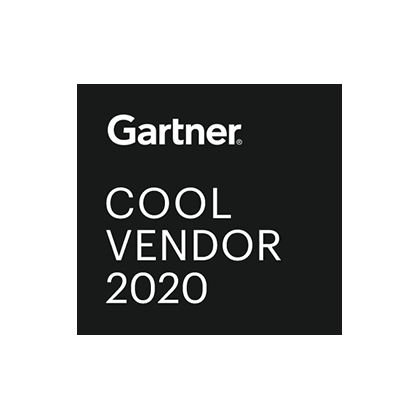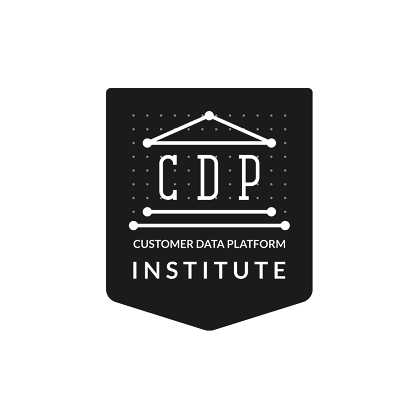With Google set to eliminate third-party cookies on Chrome at the end of 2023, the race is on for the marketing world to find new ways to deliver quality advertising – and to do so fast.
Thankfully, we’re beginning to see more alternatives popping up – but the sheer range of them can make this new landscape more confusing than comforting. So which solutions are recommended, and will there ever be a true alternative to the third-party cookie? This article hopes to provide some answers.
How to adapt in a cookieless world
Firstly, it’s important for marketers to know what we really mean by the term “cookieless world”.
Despite the fact that “a world without cookies” is a term that’s being used freely, only third-party cookies are actually being deprecated. First-party cookies (the ones that domain owners store themselves) will be kept, which means opportunities for relevant website personalisation and data capture remain.
With that clarified, let’s move on to what this new reality of addressability might look like for marketers.
5 Best Alternatives To Cookies
Though there might not be a like-for-like replacement for third-party cookies, there are a number of different cookie alternatives becoming available to marketers. Below, we list the top five
1. First Party Data
First-party data has always been invaluable to marketers as it provides precise information on customers AND you have full control and ownership of it.
With first-party data, you can learn what a user did on your website, how frequently they visited it, and other vital information that aids in the creation and automation of an effective marketing strategy around them.
More importantly, first-party data assets can be used to create a single customer view of an individual customer’s characteristics and activities. Data such as consumer preferences (taken from pages viewed, or items in the cart), geographic location, potential demographic and device information, as well as behavioural data can all be used to create a comprehensive customer profile that can be targeted with relevant marketing and advertising opportunities.
This allows you to build more precise user segments, and resolve user identities across their many devices and identifiers. To do this, you need to enlist the help of a good Customer Data Platform (CDP) like Zeotap’s, which will take the data from your various sources (i.e. your email service provider and your PoS system) and unify it to create a single pool of data that you can segment and activate.
It’s widely understood that of all the alternatives to cookies, first-party data is perhaps the most important for marketers to invest their time and effort in. With full ownership and control of this data asset, marketers will be able to create and deploy smart, granular audience segments across a wide range of channels and platforms (more on how later).
2. Topics – Google’s current answer
As a direct action of its desire to phase out third-party cookies, Google has been innovating. In 2019, it unveiled the Privacy Sandbox, which was positioned as the search engine’s initiative to meet its rising consumer expectations for more privacy.
It was then announced that Sandbox was to leverage a tracking method called Federated Learning of Cohorts (FLoC). Cohorts refers to a number of people using the same identifier, and it’s something we explore later as a powerful potential alternative for marketers due to their ability to retain privacy but supply valuable information for targeting.
Google’s FLoC was set to lead the way in this alternative method, as instead of using third-party cookies, FLoC would analyse online activity within the Chrome browser to collect information about users. It would then assign a cohort to a user based upon their browsing history, and advertisers would then be able to target based on cohorts.
But in January 2022, Google announced FLoC would be shelved and that Google Topics would take its place. This was largely the FLoC initiative ran into problems in Europe surrounding GDPR and ePrivacy Directive regulations. Google struggled to answer questions such as, when a user is placed in a FLoC cohort, who becomes responsible for controlling and processing their information, and secondly, how would the user’s cohort information be captured?
Similarly to FLoC, Topics will target ads to users based on the most prominent categories of content they check out online, and it will contain the categorisation to the device. However, unlike FLoC, Topics will offer a much more general – and therefore non-identifying – level of categorising.
The Topics API is a tool that will allow Chrome to determine a list of subjects that best represent a user’s interests based on their browsing habits, such as “sports” “fitness,” “news,” and “clothing.”
Every week, a browser will select five subjects for each person — one at random to confuse sites trying to resolve identities — and choose one topic or interest category to give that individual for the week. Users can opt in to changing the topics assigned to them, and they will be able to opt out of this ad targeting capability as well.
After that, each topic is then kept for three weeks so that when a user visits a website, the website, or ad company it’s using to deliver ads, can use the topics API to view up to three topics for that site visitor. However, the website and its ad tech firms can only access topics that are relevant to the site or other sites with its code.
For example, if a person assigned the topics “dogs,” “clothing,” and “sports” then visits a website categorised as “travel”, that site will not be able to access any of those other topics for that week. But if the user is given the subject “travel” the following week and returns to the site, it will be able to access the previously gated topics, like “sports” or “clothing” in order to make its ads and personalisation efforts more relevant.
The benefits of Topics seem straightforward: websites are unable to identify users and create comprehensive profiling data, but can use the topics supplied by Google’s API to increase the chance of targeting a user with a relevant ad. However, a potential pitfall which is still to be resolved is whether or not websites will be allowed to set or override their assigned topics.
If websites are allowed to choose their topics, this could undermine the entire concept of the API as websites could potentially manipulate which topics they appear for, and are likely to choose the most valuable topics without necessarily needing to host the related content.
This is due to topics being assigned based on the website’s hostname. It’s easy to see then how an eCommerce company could choose a hostname irrelevant to their actual content just to appear for the topic.
Google is actively requesting feedback and ideas from the industry on this issue in particular, which suggests potential loopholes like the above will be closed long before the final API is rolled out.
3. Universal IDs
Identifiers that are unique, persistent and shared across the digital marketing ecosystem are known as Universal IDs. They’re designed to protect the future of identification and addressability when third-party cookies are phased out in 2023.
The solution protects advertisers’ ability to deliver relevant, targeted advertising while providing more control over it to the consumer.
It addresses the privacy concerns associated with third-party cookies through:
- Providing total anonymity: The email addresses of your users are anonymised and used to generate unique Identifier (ID) numbers. It’s a private string made up of numbers, letters, and other characters that can’t be linked back to their email address.
- Granting complete user control: Users can log in to access information about how their ID is used and shared by advertisers.
- Providing significant transparency: Users are informed about the exchange of data in a straightforward manner on a simple publisher interface.
In Zeotap’s own Universal ID solution, ID+, explicit user consent is transparently baked into every record, with built-in tokenisations that ensure the protection of user data. Plus, we base ID+ on transparent user authentication through hashed offline identifiers which do not rely on cookies or MAIDs. This privatises and protects user data to a much higher degree.
However, despite the fact that the technology is already in place, a universal ID does necessitate that users submit their email addresses. And this isn’t always simple to do, which means there will be heavy reliance on value exchanges and transparent communications going forward.
4. Contextual Advertising
Contextual advertising is a type of internet advertising that targets consumers based on the content of the page they’re visiting
This means users are only targeted by ads that are relevant to their interests, and don’t need to give up any privacy.
For example, if a user had been viewing a sports website before, and then clicked onto a clothing site, they will not be targeted with clothing ads on the sports site – just sports related adverts. This protects user privacy as they move from site to site.
Contextual advertising does come with a downside however: it has limited accuracy. Browsing a site related to sports doesn’t necessarily indicate an intent to purchases sports-related goods, but because contextual ads target the content (rather than the user), the advertiser is forced to make assumptions like these.
More recently contextual advertising has also faced disrepute after Integral Ad-Science, a high profile vendor offering brand safety and ad verification tools to advertisers, was accused of collecting and selling data outside of a publisher’s licensing agreements.
It’s led to fears that more ad-tech firms may be scraping and selling publisher data unfairly, and potentially infringing upon a publisher’s “intellectual property” in order to use the content and then create contextual advertising segments for their clients without publisher permission and outside of contractual agreements.
As ad spend shifts to contextual advertising and away from personal information, publishers will be seeking further reassurance that they have a more prominent and protected role as the industry adopts new technologies, which could impact on how contextual advertising is used going forward.
5. Walled Gardens
As the cookieless future looms, many companies are scrambling to find a way to maintain their data-driven advertising efforts. One potential solution is the walled gardens.
A walled garden is a closed ecosystem that allows companies to collect and use data from users within the ecosystem – examples include Google, Facebook and Amazon. By controlling the data that flows in and out of the ecosystem, companies can maintain a high degree of certainty about the identity and behaviour of users.
This, in turn, allows them to target ads more effectively. In an increasingly cookieless world, walled gardens may become an essential tool for companies that rely on data-driven advertising.
Bringing it all together…
Though the deadline has repeatedly been moved back, the truth is that third-party cookies have been on the verge of extinction for years.
However, across the spectrum there are significant differences in the options various marketing teams are willing to take. Perhaps unsurprisingly, high-achieving marketing teams are planning to implement a wide range of solutions including fingerprinting or probabilistic advertising, cohort-based advertising, and Universal ID or authentication, as well as walled gardens.
In the end, this implies there is no one-size-fits-all solution for compensating forthird-party cookies – and research shows that the more successful marketers are spreading their bets across multiple solutions. The signs are clear: marketers must act quickly to establish the appropriate balance of breadth, quality, and privacy.
This is where Zeotap can help:our Customer Data Platform can drive measurable results by becoming the foundation for your first-party data asset, creating the single customer view that will be pivotal as a post-cookie alternative.
